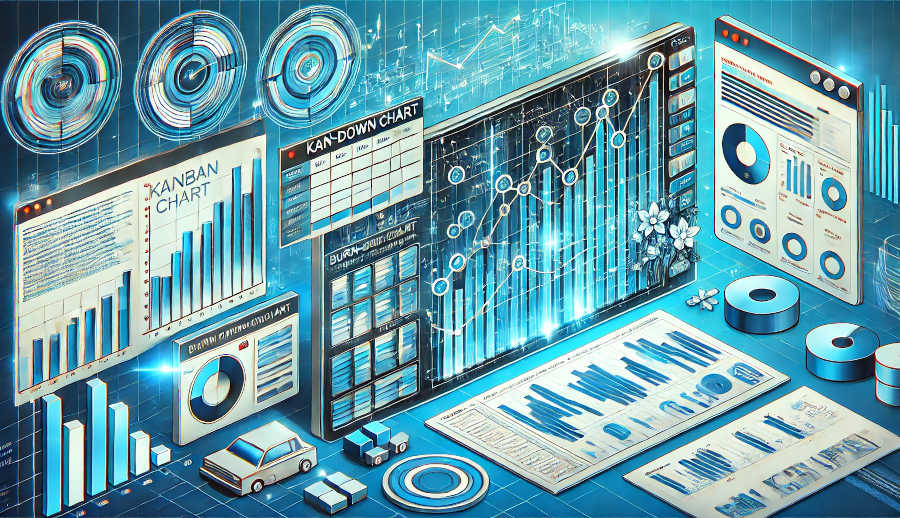Establish Clear Ground Rules
The first step in improving the efficiency of your Daily Scrum is to establish clear ground rules. These rules should outline the purpose, format, and expectations of the meeting, ensuring that everyone understands their role and responsibilities. By setting clear guidelines, you can minimize distractions, prevent discussions from veering off-topic, and keep the meeting focused on the most important issues.
One important ground rule is to keep the meeting timeboxed. The Daily Scrum should typically last no more than 15 minutes, allowing the team to quickly align and address any obstacles or challenges. To ensure that the meeting stays within the allotted time, it's important to start and end on time, and to encourage team members to be concise and to the point.
Another ground rule is to encourage active participation from all team members. The Daily Scrum is not a status update meeting where team members simply report on their progress. Instead, it's an opportunity for the team to collaborate, share ideas, and solve problems together. To encourage active participation, you can ask open-ended questions, encourage team members to share their perspectives, and create a safe and supportive environment where everyone feels comfortable speaking up.
Keep the Meeting Focused
One of the biggest challenges of the Daily Scrum is keeping the meeting focused on the most important issues. With so many competing priorities and distractions, it's easy for discussions to veer off-topic, wasting valuable time and energy. To keep the meeting focused, it's important to have a clear agenda and to stick to it.
The agenda for the Daily Scrum should typically include three main questions: What did you do yesterday? What will you do today? Are there any obstacles or challenges preventing you from making progress? By focusing on these three questions, you can quickly align the team and identify any issues that need to be addressed.
It's also important to encourage team members to be concise and to the point when answering the questions. Instead of providing a detailed status update, team members should focus on the key highlights and any significant progress or challenges. This will help to keep the meeting focused and ensure that everyone has an opportunity to contribute.
In addition to the agenda, it's also important to have a clear process for handling any issues or challenges that arise during the meeting. If a team member identifies an obstacle or challenge, the team should discuss possible solutions and assign ownership for resolving the issue. By having a clear process in place, you can ensure that issues are addressed promptly and that the team can continue to make progress.
Use Visual Aids
Visual aids can be a powerful tool for improving the efficiency of your Daily Scrum. By using visual aids such as a task board or a burn-down chart, you can quickly and easily communicate the team's progress, identify any issues or challenges, and keep everyone on the same page.
A task board is a visual representation of the team's work, showing the different tasks or user stories that need to be completed, as well as their current status. By using a task board, team members can quickly see what needs to be done, who is responsible for each task, and how far along the team is in completing the work. This can help to improve transparency, collaboration, and accountability within the team.

A burn-down chart is another visual aid that can be used to track the team's progress over time. The burn-down chart shows the amount of work remaining in the sprint, as well as the rate at which the team is completing the work. By using a burn-down chart, team members can quickly see if they are on track to meet their sprint goals, and can identify any issues or challenges that may be preventing them from making progress.
In addition to task boards and burn-down charts, there are many other visual aids that can be used to improve the efficiency of your Daily Scrum. For example, you can use a Kanban board to visualize the flow of work through the development process, or you can use a mind map to brainstorm ideas and solutions to problems. By using visual aids, you can make the Daily Scrum more engaging, interactive, and effective.
Encourage Collaboration
The Daily Scrum is not just a status update meeting; it's an opportunity for the team to collaborate, share ideas, and solve problems together. By encouraging collaboration during the meeting, you can foster a sense of teamwork, improve communication, and increase the chances of success for your project.
One way to encourage collaboration is to create a safe and supportive environment where everyone feels comfortable speaking up. This means respecting everyone's opinions and ideas, even if you don't agree with them. It also means encouraging team members to ask questions, share their perspectives, and offer suggestions for improvement.
Another way to encourage collaboration is to use techniques such as brainstorming or pair programming. Brainstorming is a technique where the team generates ideas and solutions to a problem by freely sharing their thoughts and suggestions. Pair programming is a technique where two developers work together on a task, sharing the keyboard and collaborating to write code. By using these techniques, you can encourage team members to work together, share knowledge and skills, and come up with innovative solutions to problems.
In addition to creating a safe and supportive environment and using collaboration techniques, it's also important to encourage team members to take ownership of their work and to be accountable for their actions. This means setting clear expectations, providing feedback and support, and holding team members responsible for meeting their commitments. By encouraging collaboration and accountability, you can create a high-performing team that is capable of delivering high-quality products on time and within budget.
Continuously Improve
Finally, it's important to continuously improve the efficiency of your Daily Scrum. By regularly reviewing and reflecting on the meeting, you can identify areas for improvement and make changes to the process to make it more effective.
One way to continuously improve the Daily Scrum is to solicit feedback from the team. This can be done through surveys, one-on-one meetings, or group discussions. By asking the team for their feedback, you can identify any issues or challenges that they are facing, as well as any suggestions for improvement.
Another way to continuously improve the Daily Scrum is to experiment with different techniques and approaches. For example, you can try using a different format or agenda, or you can experiment with different visual aids or collaboration techniques. By experimenting with different approaches, you can find the ones that work best for your team and your project.
In addition to soliciting feedback and experimenting with different techniques, it's also important to track and measure the effectiveness of the Daily Scrum. This can be done by tracking metrics such as the length of the meeting, the number of issues or challenges identified, and the amount of time spent on each agenda item. By tracking these metrics, you can identify trends and patterns, and make data-driven decisions about how to improve the efficiency of the meeting.
In conclusion, the Daily Scrum is a crucial communication and synchronization point for Agile teams. By following these five tips - establishing clear ground rules, keeping the meeting focused, using visual aids, encouraging collaboration, and continuously improving - you can improve the efficiency of your Daily Scrum, ensuring that your team stays on track, collaborates effectively, and maximizes productivity. Remember, the Daily Scrum is not just a meeting; it's an opportunity for the team to come together, share ideas, and solve problems together. By making the most of this opportunity, you can create a high-performing team that is capable of delivering high-quality products on time and within budget.
ARTICLE TITLE :Daily Scrum in Agile Development: 5 Tips to Improve Efficiency ,AUTHOR :ITpmlib

















